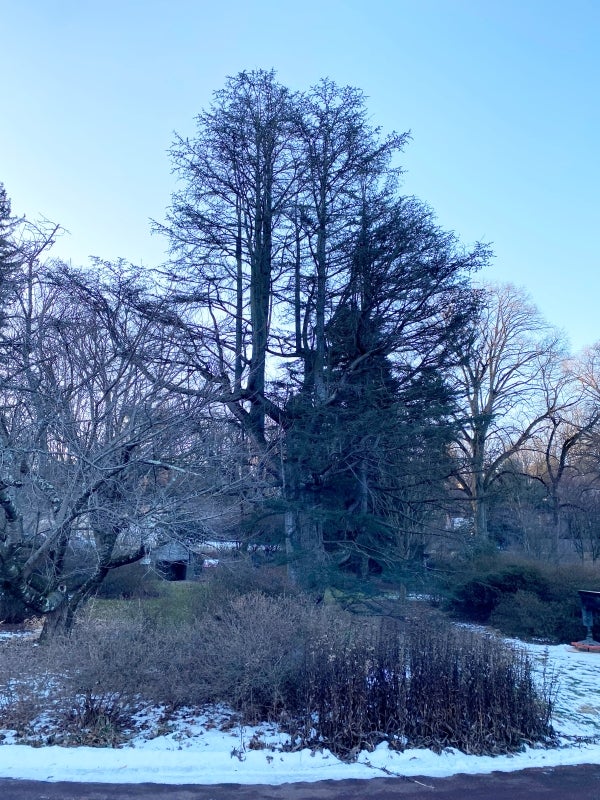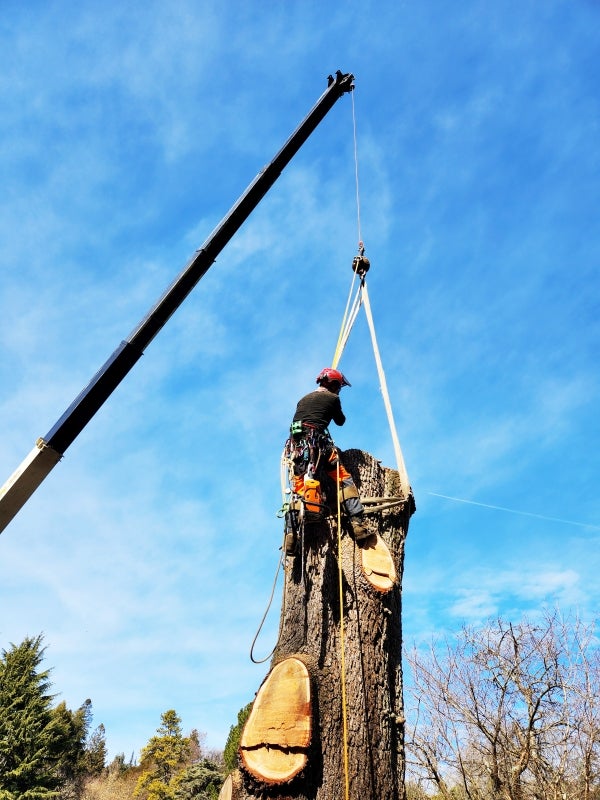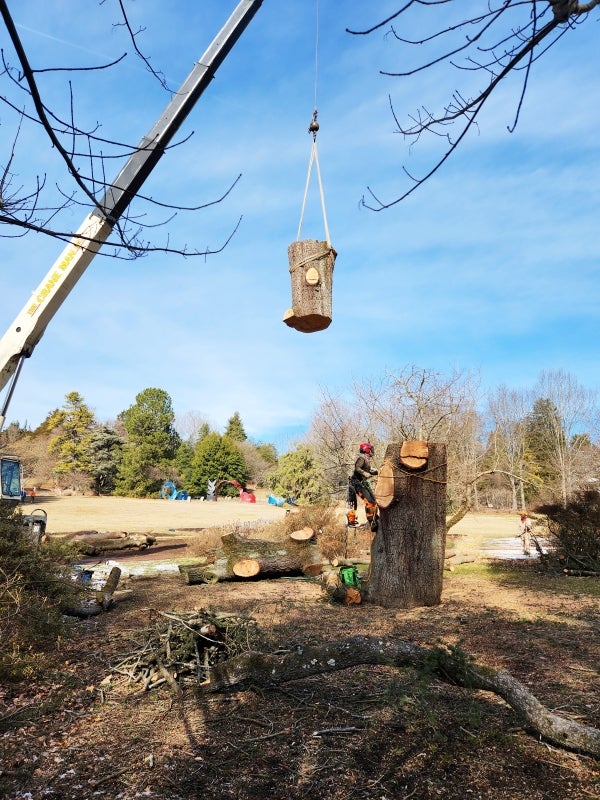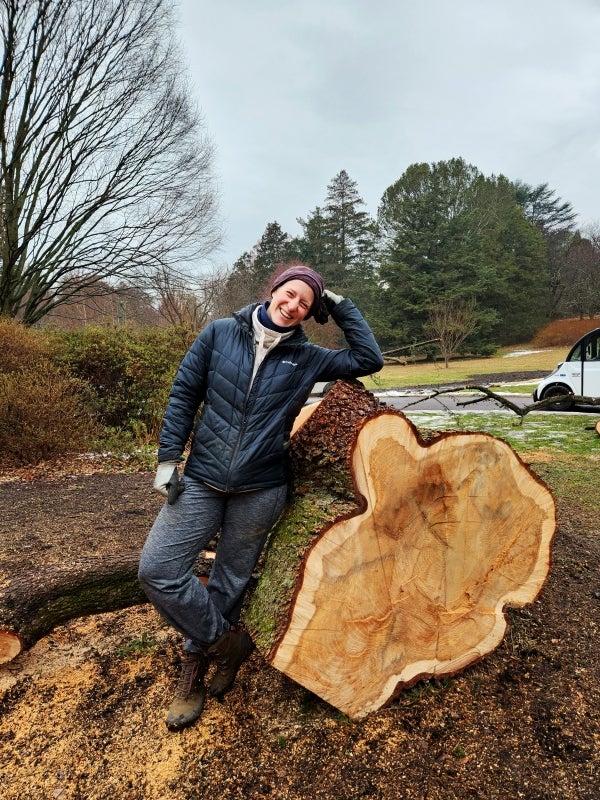Blog
Elegy for the Lebanon Cedar

For the last several decades, our majestic cedar of Lebanon trees (Cedrus libani) have struggled to survive our changing weather. This evergreen conifer is native to the mountainous regions of Lebanon, Syria, and Turkey. Young trees grow as strong, upright sentinels. As they age, they develop massive trunks, broad spreading crowns, and distinctive horizontal branching, making them magnificent specimens for parks and arboreta. In 1887, when John and Lydia started their Compton Estate, Lebanon cedar was considered a well-adapted plant for the Philadelphia region and was often planted as a featured specimen. We have had several Lebanon cedars in our collection, but only two remain from the original garden.
Lebanon cedars, like many higher elevation conifers, have evolved a survival strategy of markedly slowing their growth and respiration rates during cool nights. This ability allows them to make maximum use of warm daylight temperatures to produce sugars and essentially go dormant during cool nights to conserve energy. This mechanism allows the trees to build up a surplus of stored energy over time. This energy, in the form of sugars, is then used to produce vigorous growth in what would normally be inhospitable environments. This strategy works in a high elevation environment where there are reliable cold nights, but it also predisposes this species to heat stress. When nighttime temperatures are too warm, the trees don’t slow down enough and essentially use up all the sugars produced during the daytime. A slight increase in average nighttime temperatures can significantly impact the tree’s physiology and growth. These warm nighttime temperatures can lead to an energy deficit where, instead of creating a surplus of energy, trees tap into stored energy reserves just to survive. Prolonged heat waves can lead to chronic stress, reduced photosynthesis, reduction in stored sugars, and potential dieback.


Our Lebanon cedars have endured a relentless series of scorching summers over the past few decades. In their natural habitat, summer daytime temperatures can soar into the upper 90-degree range, but nighttime temperatures often drop to the 50-degree range. While they can withstand daytime heat, it is the prolonged periods of nighttime warmth that have been problematic. Last summer was particularly devastating to our Lebanon cedars. The excessive heat, coupled with a record-breaking drought, set up a perfect storm of stress. Despite our best efforts at keeping these trees irrigated and mulched, we were unable to mitigate the effects of extreme heat and unprecedented drought. As a result, our already struggling trees have reached their breaking point, and we have made the difficult decision to remove these venerable old specimens from the collection. However, their legacy will live on in other forms.

The wood of Lebanon cedar is a prized building material. The dense, aromatic, decay-resistant wood has been a choice building material for millennia. It has been used for temples, palaces, and shipbuilding. The cedar of Lebanon is steeped in history and legend. It is mentioned in the Epic of Gilgamesh, where it was said to be protected by Mesopotamian gods. The Phoenicians used its wood to build their renowned ships, and the Egyptians crafted paper from it. The Bible recounts how King Solomon used cedar wood to construct the Temple in Jerusalem. Even during the Roman Empire, Emperor Hadrian declared the cedar forests as royal domains to protect them from destruction. Despite these efforts, the trees faced exploitation over the centuries, including significant deforestation during World War I for railroad construction. Today, with the ravages of changing weather and the threat of overuse, the remaining cedar forests in Lebanon are protected as UNESCO World Heritage sites. We are fortunate to have such large specimens that we can salvage for future use in Morris projects.
As our summers continue getting hotter, the changing weather may spell the end for Lebanon cedar as a suitable tree for Philadelphia. However, it is not quite the end for Lebanon cedar in our garden. Several specimens remain, including a notable one on the small lawn above Seven Arches. Seeds for this plant were wild-collected in the Taurus Mountains in southern Turkey. These mountains separate the Mediterranean coast from the Anatolian plateau and rise upward of 12,000 feet above sea level. The seeds for our plant were collected in 1992 by colleagues from the Nový Dvůr Arboretum in the Czech Republic. The parent plants were growing 4,100 feet above sea level on the north slope of mountains near the town of Pozanti. As a relatively young tree, our specimen stands tall and vigorous, a hopeful sentinel for the future. Only time will tell if it will age gracefully or succumb to the challenges of our future Philadelphia summers.